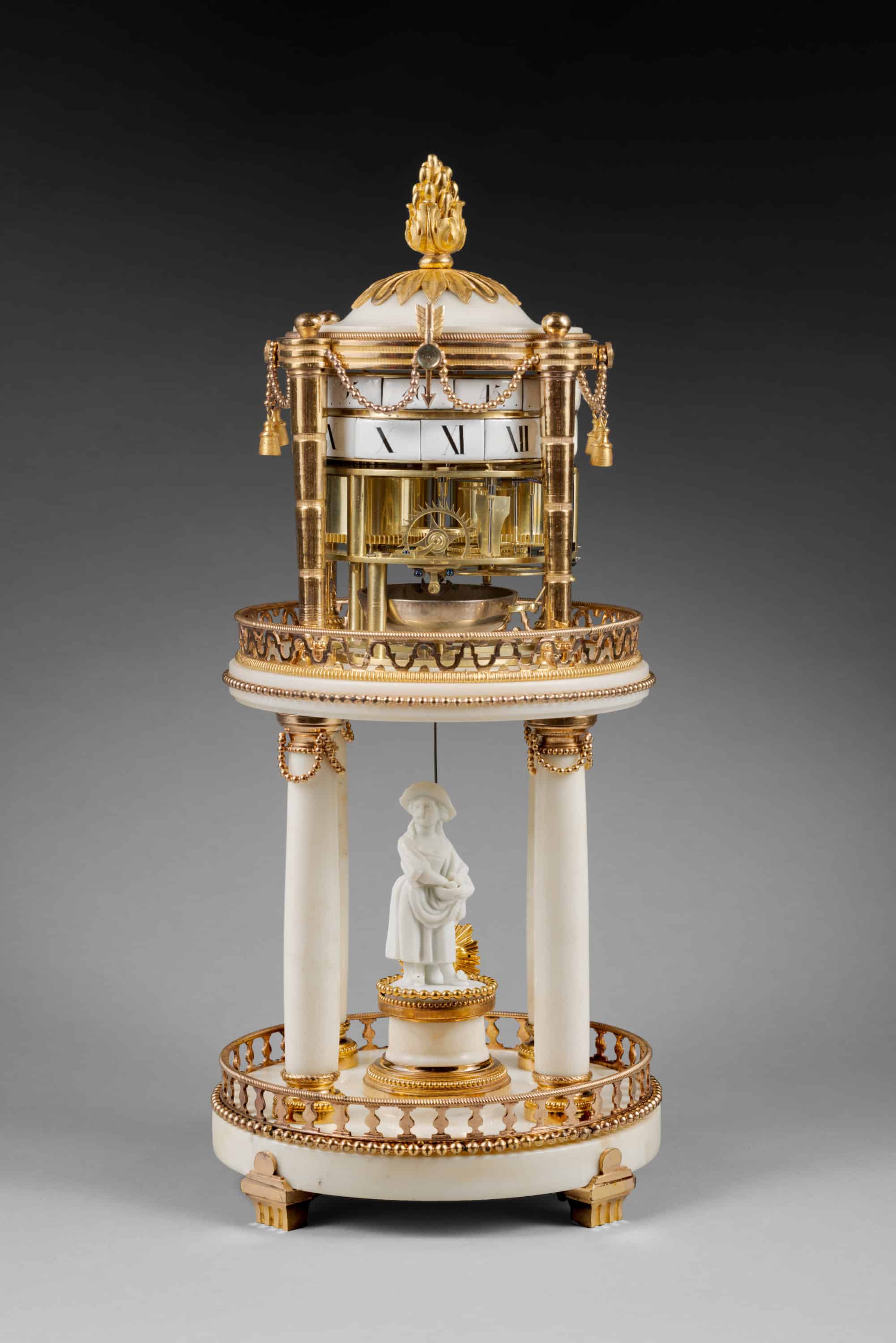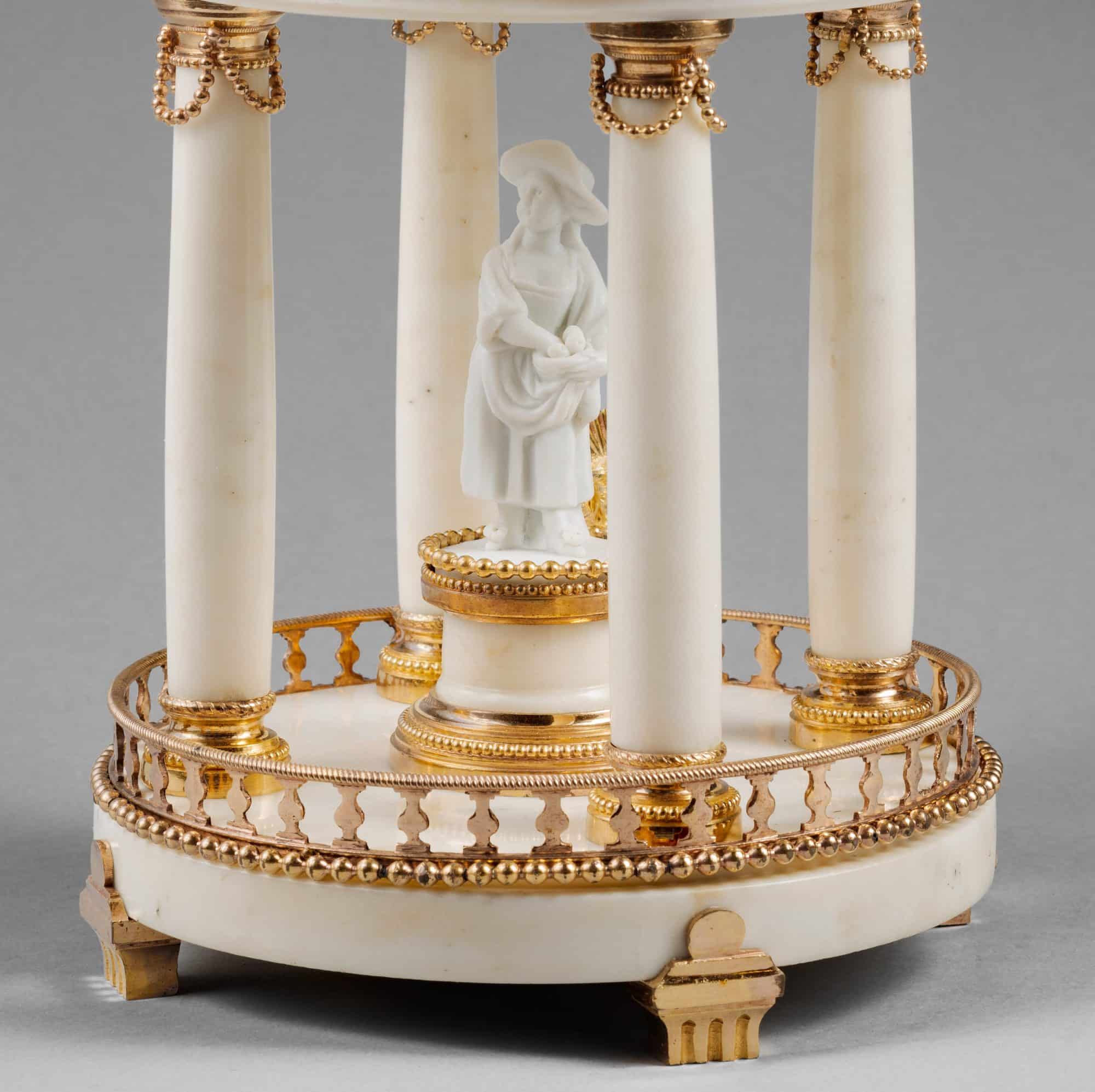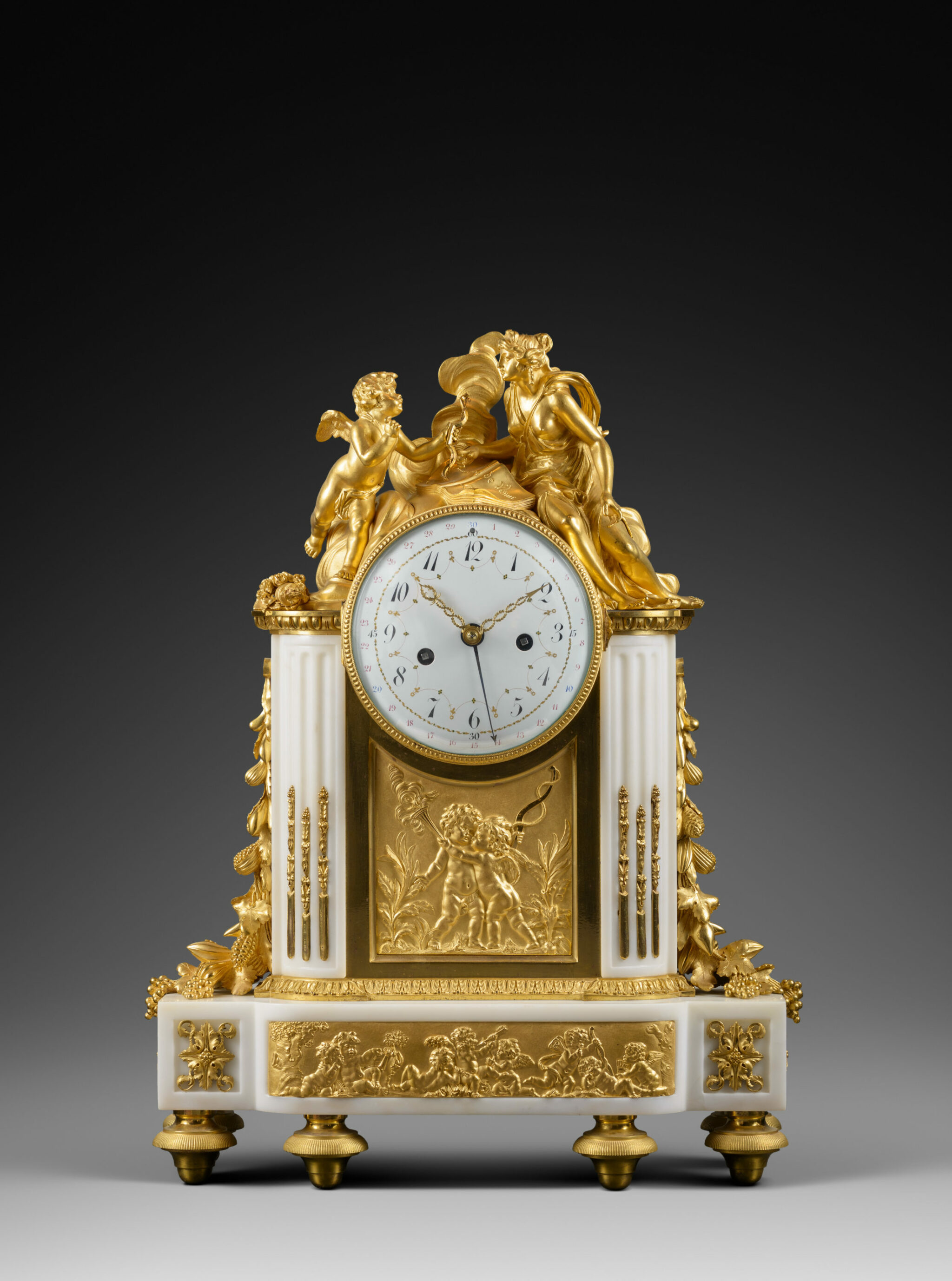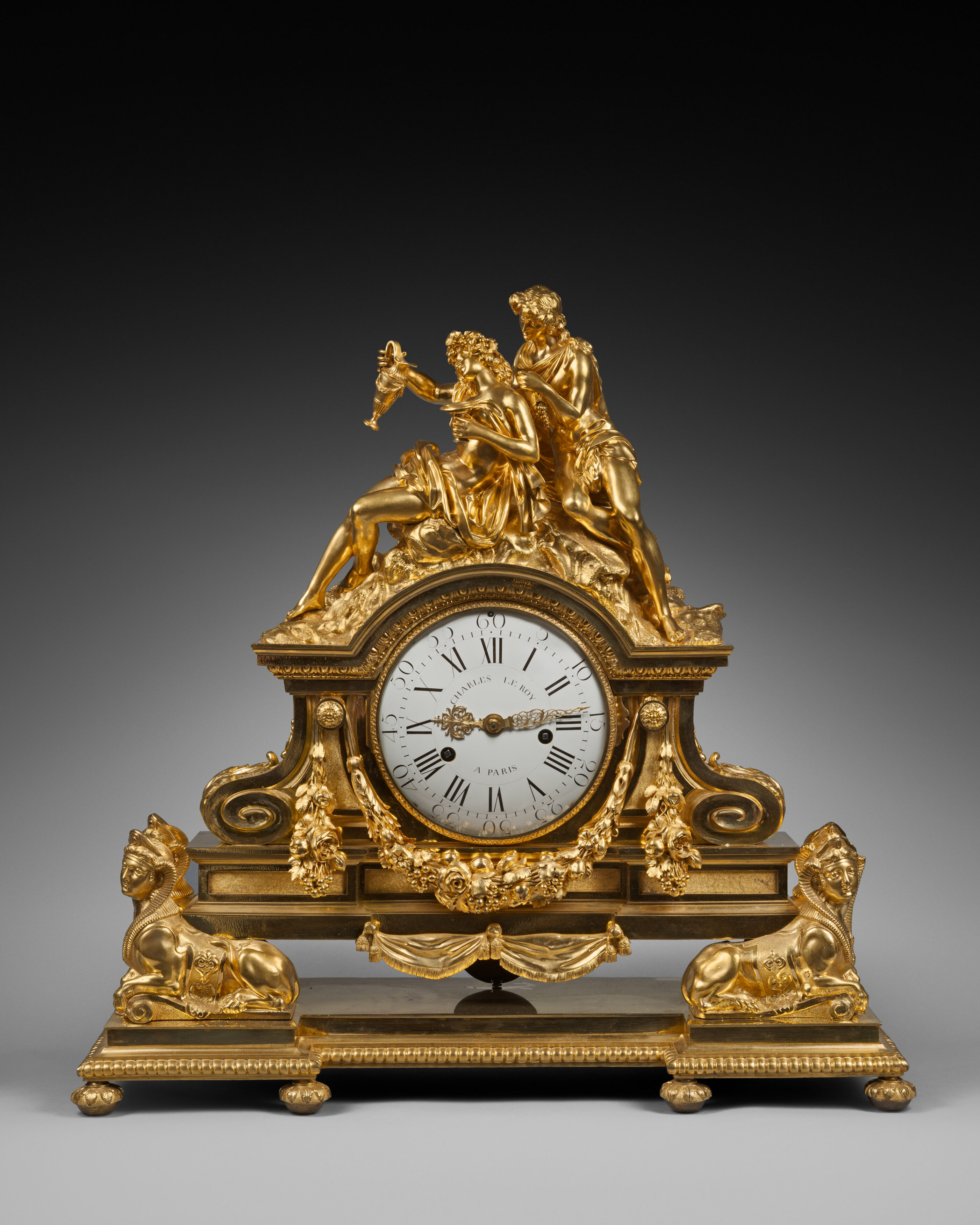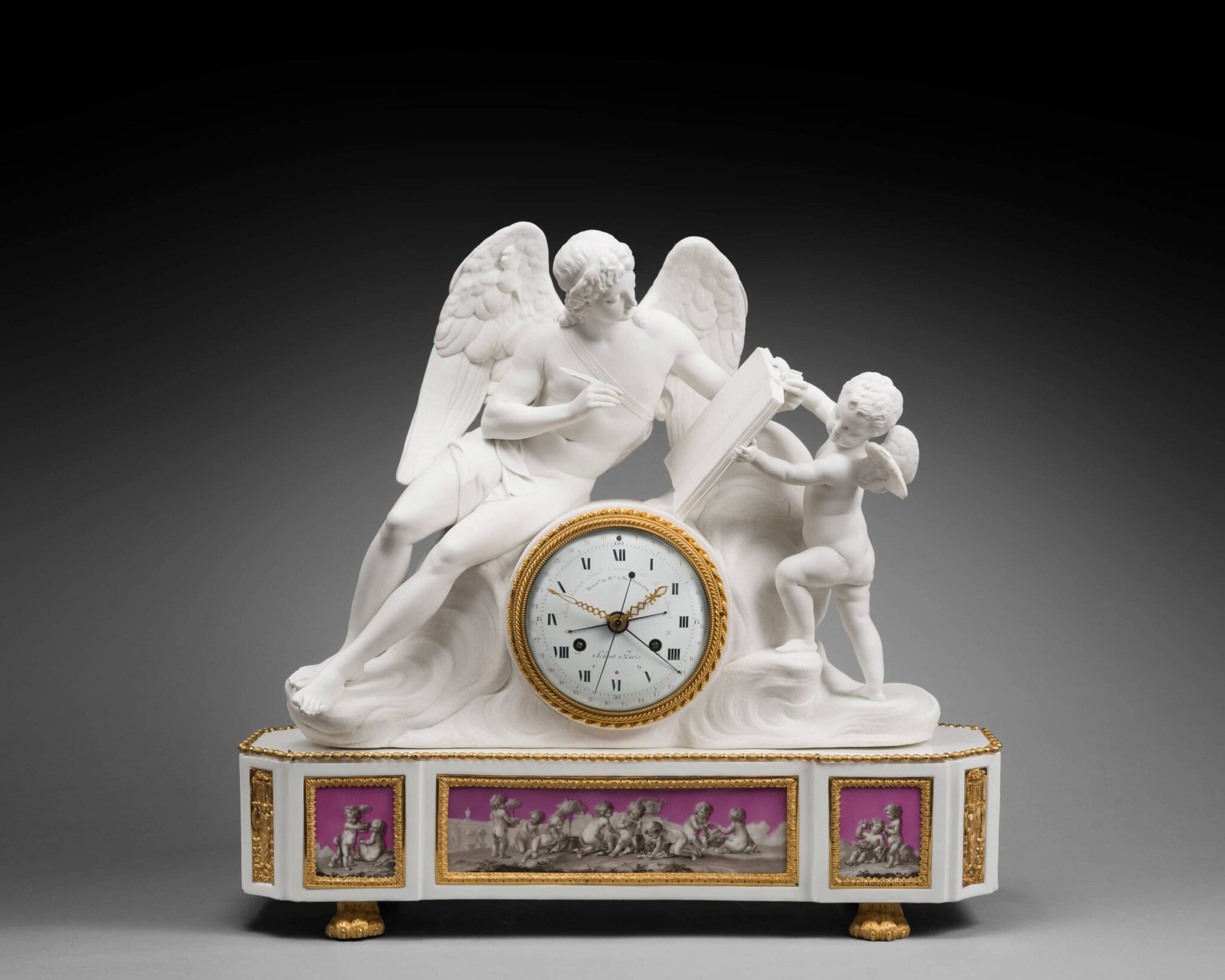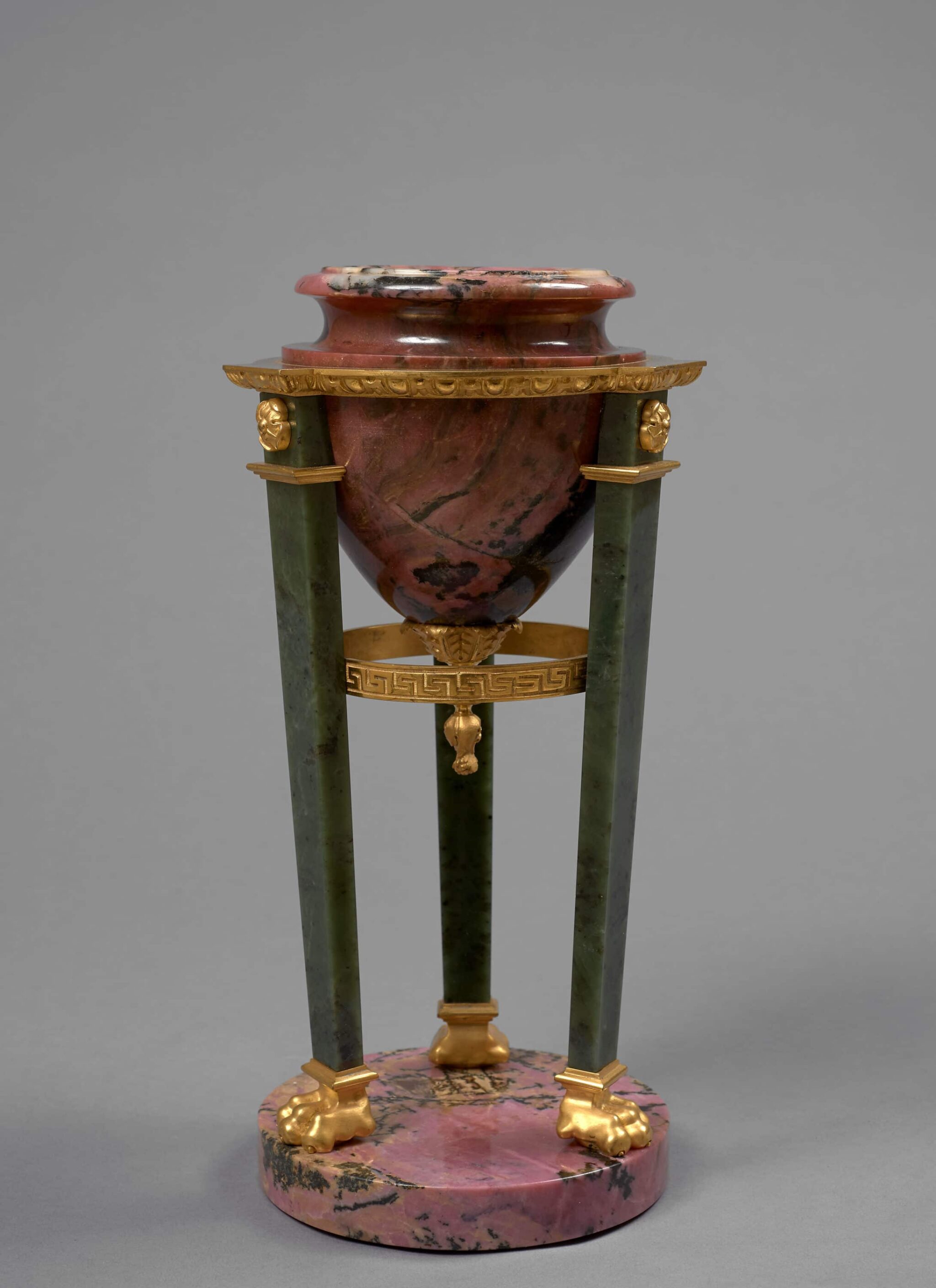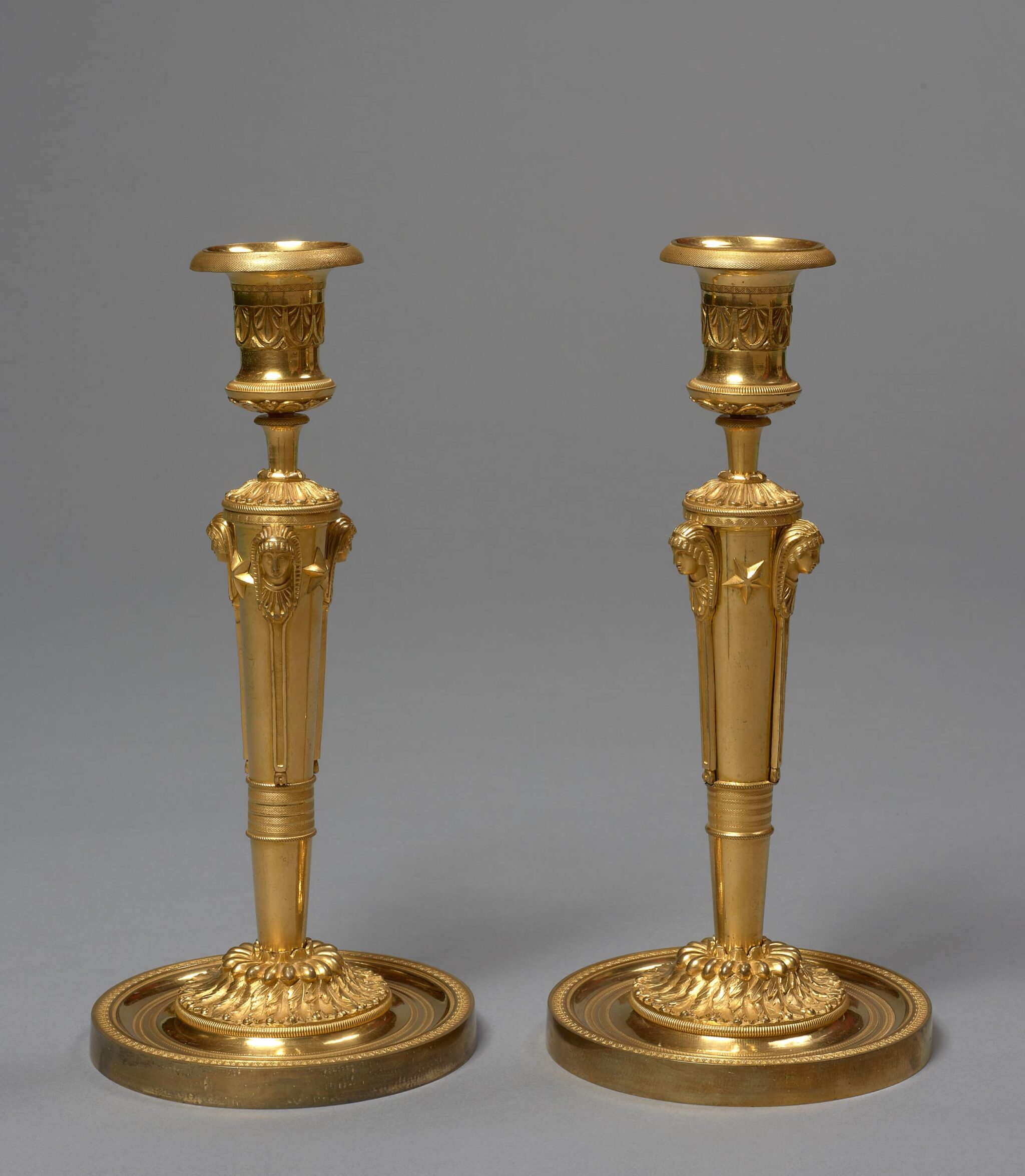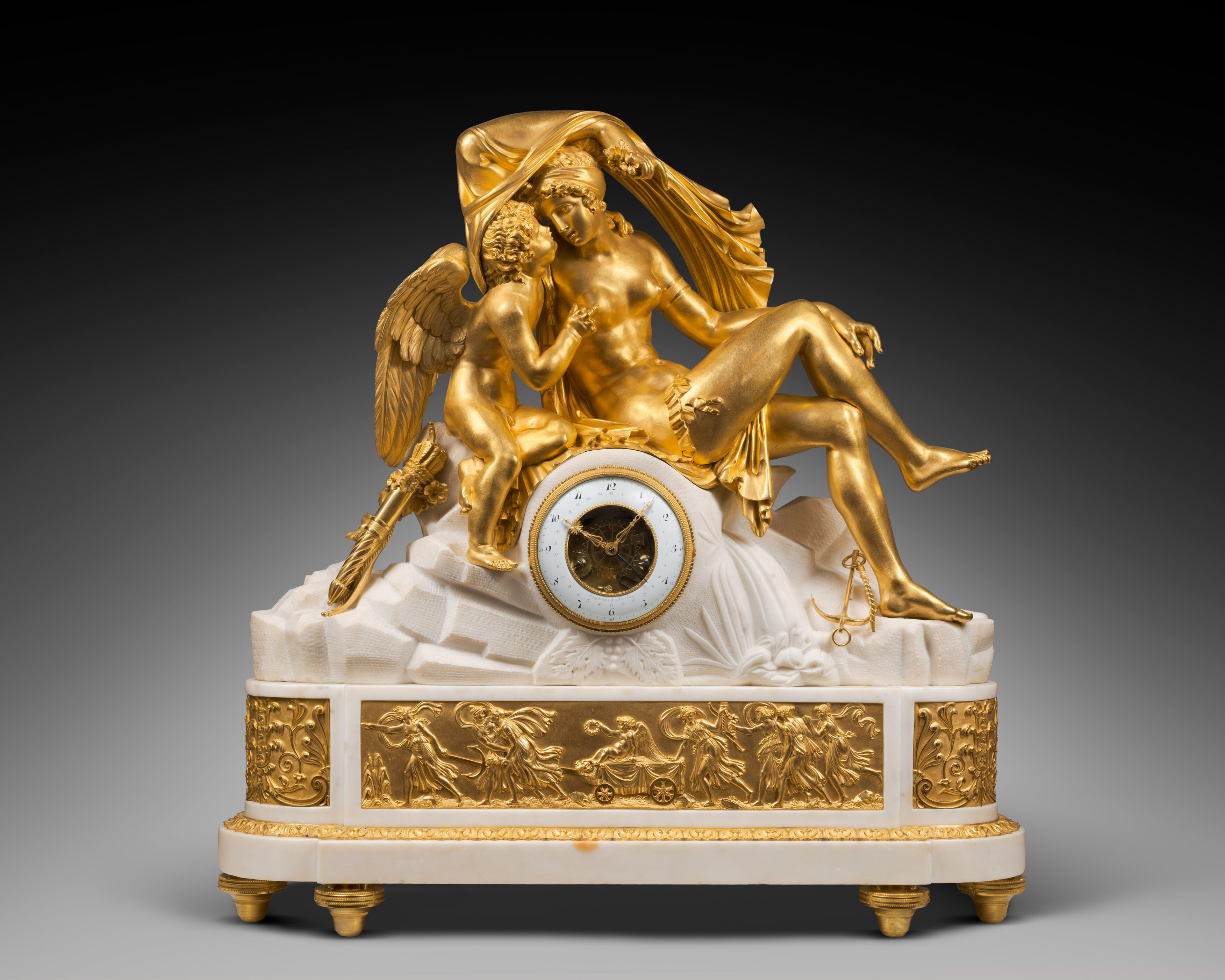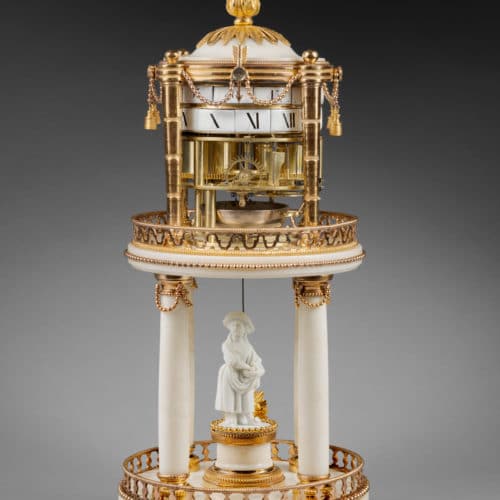Rare Mantel Clock in the Form of a Rotunda-Type Temple, made of Gilt Bronze with Matte and Burnished Finishing, Bisque Porcelain, and White Carrara Marble
The present mantel clock, a luxurious pretext for time indication, takes the form of a rotunda-type Neoclassical temple. It is made of finely chased gilt bronze with matte and burnished finishing, and white Carrara marble. The time is indicated on two cadrans tournants made up of enamel cartouches. The upper one shows the Arabic numeral five-minute intervals; the lower one indicates the Roman numeral hours. The time is indicated by a fixed gilt bronze arrow. The partially visible movement is fitted within an entablature with tapering columns decorated with knops and fluted rings that are linked by garlands of beads. The clock is surmounted by a dome with a seed and acanthus leaf finial. The upper and lower portions are linked by four columns with capitals decorated with beads and molded bases that are centered by a promontory on which stands a small bisque porcelain figure depicting a young girl who is carrying fruit in her skirt. The clock stands on a round plinth with a balustrade framed by beads and cords; it is raised upon four square feet decorated with triple fluting.
Discover our entire collection of antique mantel clocks for sale online or at the gallery.
La Pendulerie is the specialist in fine and rare antique clocks, based in Paris.
The unusual rotunda-form composition of the present mantel clock, which takes the form of a classical temple, was inspired by the “Temple of Love” that was built in 1778 for Queen Marie-Antoinette by architect Richard Mique, in the gardens of the Petit Trianon. Known as a “fabrique”, that building designed for the queen was universally considered to be absolutely beautiful, with perfectly harmonious proportions. It was much imitated in various domains of the French decorative arts at the time, and particularly in the field of horology. After its creation the “temple” clock appeared, presenting a more or less faithful version of the queen’s rotunda. In 1786 one example, which was probably comparable to the present clock, was estimated at 144 livres; it stood in the drawing room of Charles-Guillaume-Louis, Marquis de Broglie: “A mantel clock with cadran tournant mounted on four columns in white marble, with striking and ornaments of gilt copper, with a small bisque figure”. Among the small number of similar models known today, one might cite one example that was formerly in the “Au vieux Cadran” collection (see Tardy, La pendule française, 2ème Partie, Du Louis XVI à nos jours, Paris, 1974, p. 286). A second example, with lapis lazuli columns, is illustrated in P. Kjellberg, Encyclopédie de La Pendule Française du moyen-âge au XXe siècle, Les éditions de l’Amateur, Paris, 1997, p. 293, fig. A.
